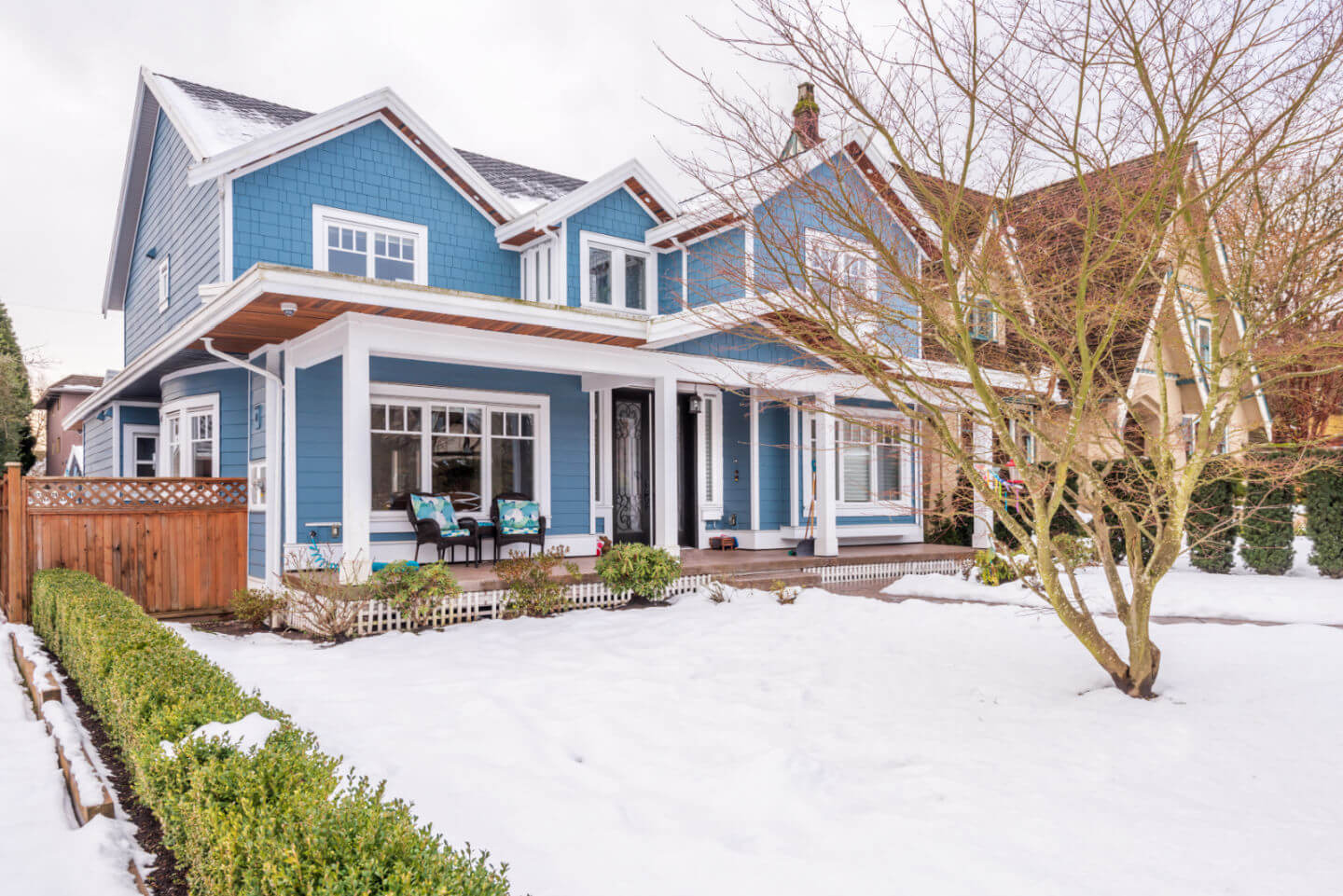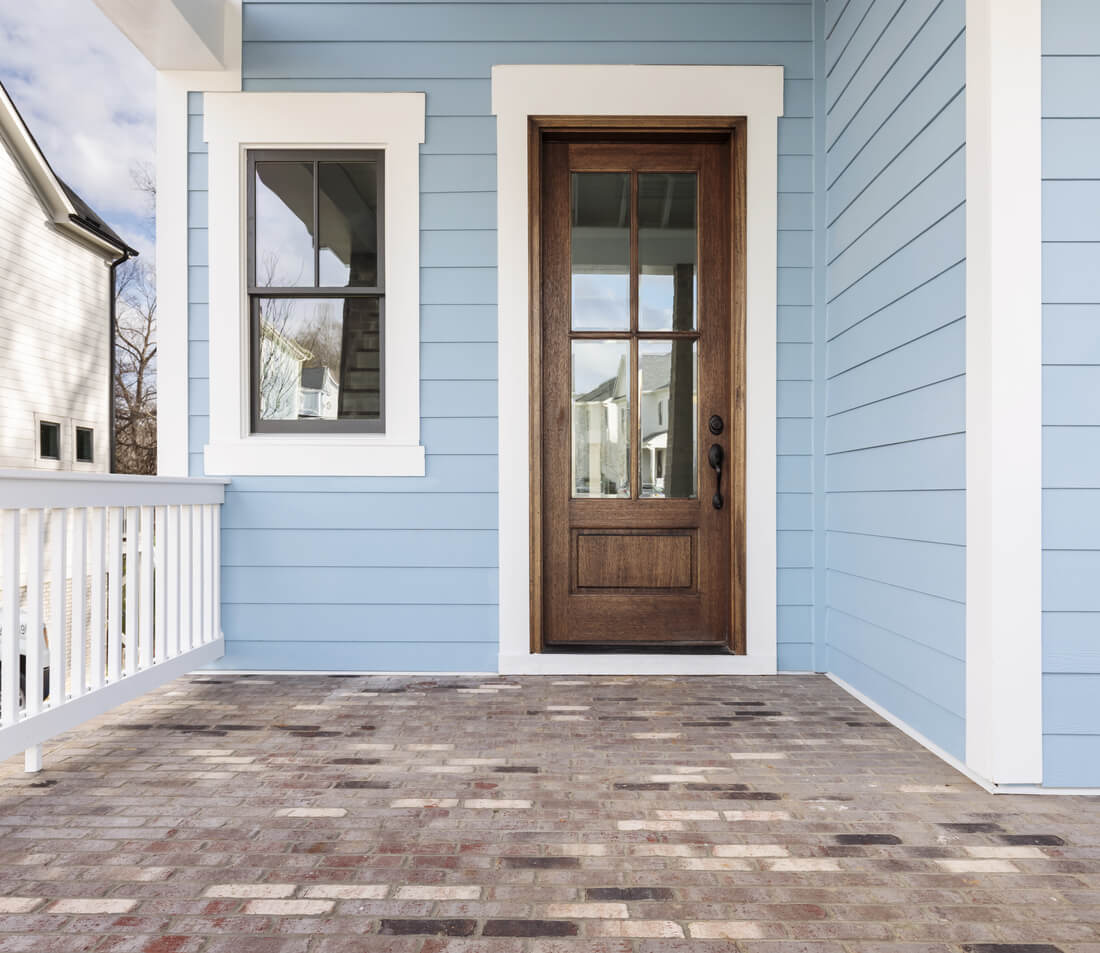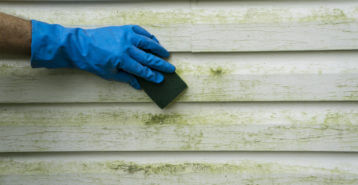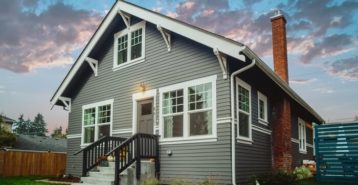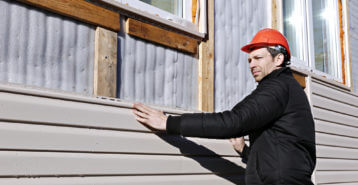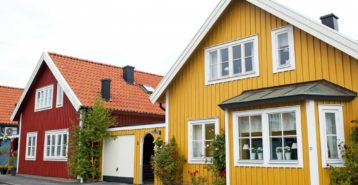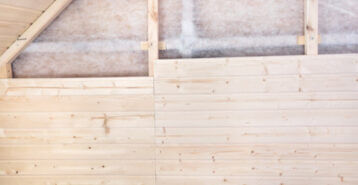Should I Get Energy-Efficient Siding?
The number one reason most homeowners consider energy-efficient siding is because it can significantly reduce your energy bills. Additionally, it can help reduce your carbon footprint by decreasing the amount of energy you use to keep your home at the temperature you want.
So how do you if you should invest in this project? Consider the following questions:
Best Energy-Efficient Siding Options
Here are our top choices, important points to consider about each of them, and which regions they may or may not work best for.
Insulated Vinyl Siding
If you are looking for the most energy-efficient siding option, look no further than insulated vinyl siding. Here’s why:
- Made with a layer of foam insulation. This helps to keep outside temperatures from seeping into your home through the siding. This also helps to reduce overall home energy costs.
- Insulated vinyl siding is designed to reduce heat loss from inside the home in winter and reduce heat gain during the summer.
- Though it is more expensive than non-insulated vinyl siding, it is still the cheapest option on this list.
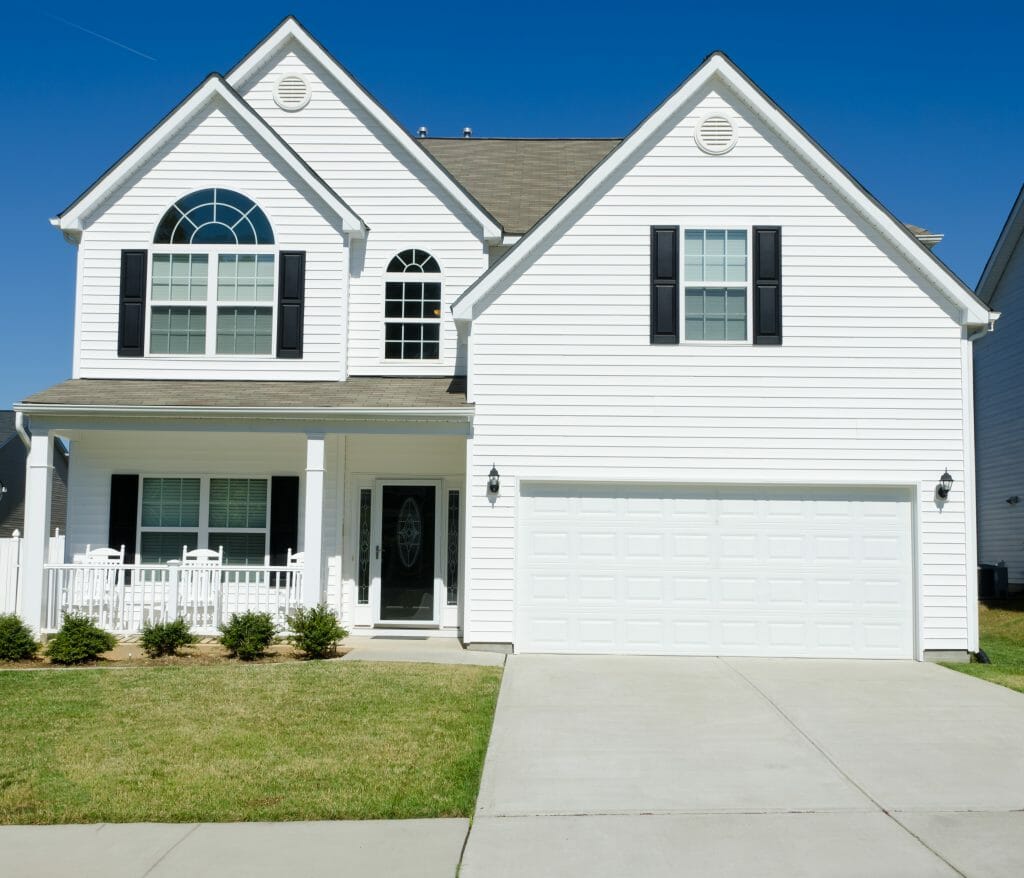
You may not want this siding type if you live in an area prone to extreme heat, which can cause some of the cheaper insulated vinyl siding options to crack or warp.
Vinyl can also melt in wildfires, so you may want to pick another siding type if your region tends to experience them.
Insulated Fiber Cement Siding
Extremely durable and weather-resistant, fiber cement siding is one of the best-insulated siding materials available. If you live somewhere where vinyl siding is not a good fit for the climate, fiber cement should be high on your list of alternatives. It is:
- Made from a mixture of cement, sand, and cellulose fibers. It’s low-maintenance, durable, fire-rated, and stands up to both extreme heat and cold.
- Available with a layer of foam insulation, like insulated vinyl siding. Due to fiber cement’s natural durability, that insulation is well-protected from the elements.
- A high ROI project. It can yield an over 80% return on investment when installed on older homes in need of a siding replacement. Opting to add insulation when installing fiber cement siding can boost your home’s value even more.
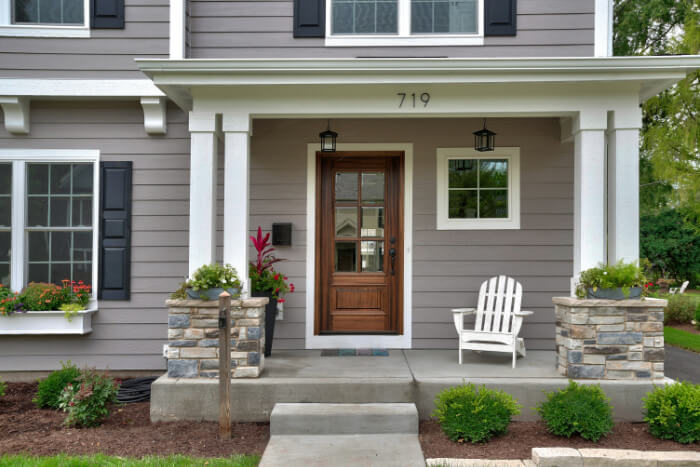
You may not want to choose fiber cement siding if you have a lower budget for your siding project. Fiber cement siding averages $6-$13 per square foot, and insulated varieties can cost even more.
Engineered Wood Siding
Though it is not quite as insulating as real wood siding, engineered wood siding is significantly lower maintenance and is more durable.
- Made from wood fibers, resin, and wax, engineered wood siding has all the aesthetic appeal of wood and none of the downsides like warping, pests, and other problems.
- More insulated than regular vinyl siding, but significantly less so than insulated vinyl siding.
- Lightweight and durable. It can also be cut into matching window trim.
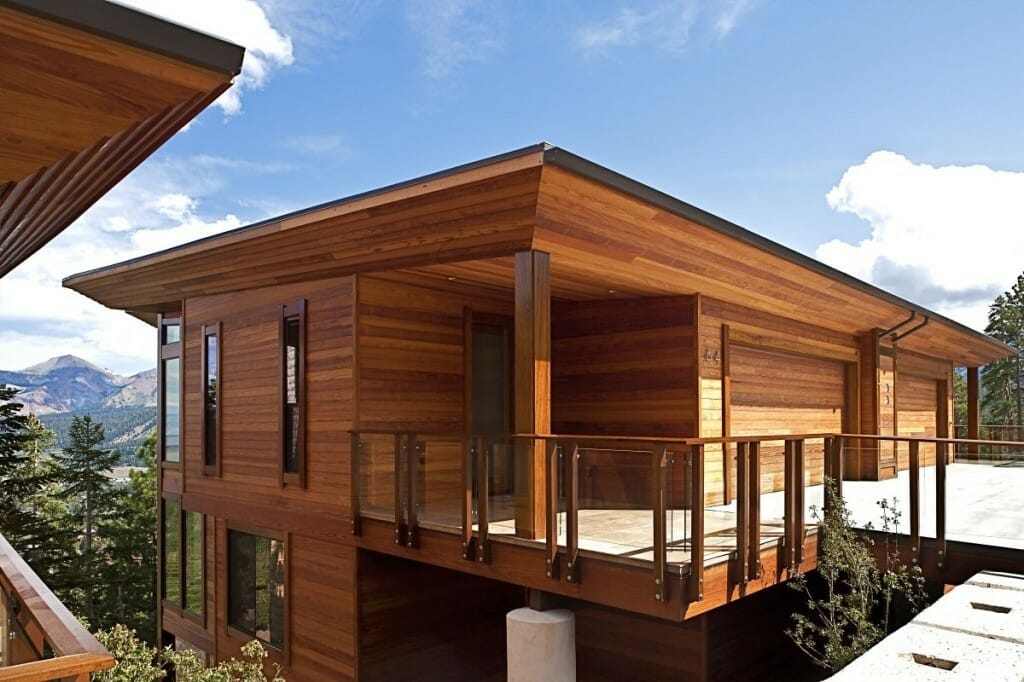
You may not want to choose engineered wood siding if you live in an area that experiences extreme weather events like hurricanes. Due to the lightweight nature of this product, it can crack or chip when met with force. Any damage can allow moisture in.
Stucco
Stucco siding — particularly synthetic stucco — does an excellent job of creating a seal around your home, matching or better the energy efficiency of insulated vinyl. There are several reasons to choose stucco as an energy-efficient siding:
- Stucco is a cement-type mixture that goes on wet and hardens as it dries. It can be applied smooth or textured.
- It is fire-rated, very durable, and fairly low-maintenance. Stucco does especially well in warm climates at keeping outside air out and inside air in.
- A newer type of application called EIFS (Exterior Insulation Finishing Systems) uses a synthetic stucco finish over foam-board insulation. It is available for those who want even more energy benefits.
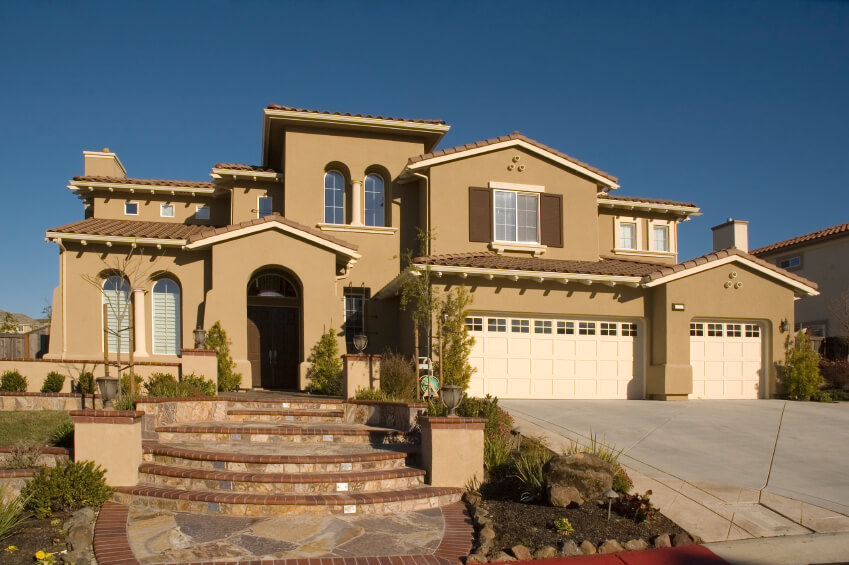
You may not want to choose stucco as an energy-efficient siding if you live somewhere with a lot of rain or snow. Stucco is porous, meaning it absorbs water. It is also prone to cracking as the house settles, so will require some upkeep. Synthetic and traditional stucco are both more difficult and expensive to install than many other siding types.
Steel
Steel siding is an excellent choice for energy efficiency. Available in seamed, seamless, and insulated options, you should consider steel siding if:
- Steel siding is reflective. In warmer months, it reflects the sun’s heat away from the house, keeping inside temperatures cooler.
- Insulated steel siding and seamless steel siding allow very little air through, ensuring the inside of your home stays the temperature you want it.
- It is low-maintenance, durable, and repels all kinds of pests including termites and rodents.
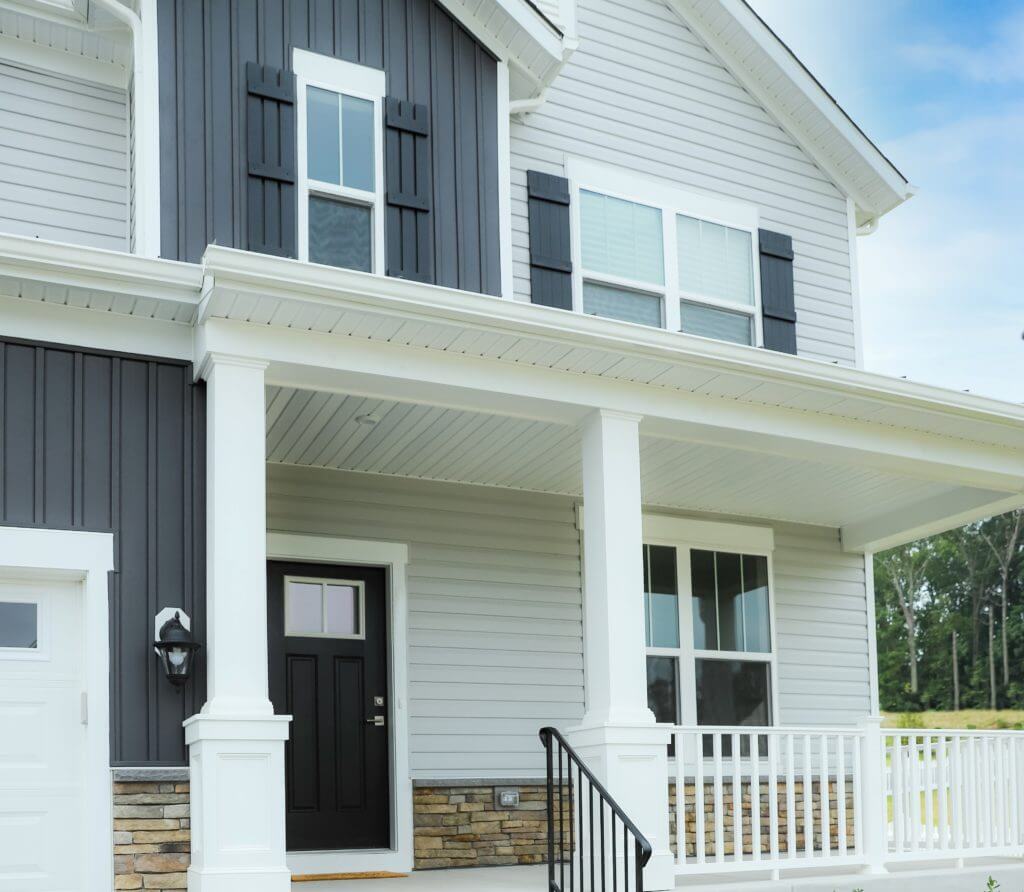
You may not want to choose steel siding if you live somewhere prone to hurricanes or hail. All types of metal siding can dent if met with force.
Energy-Efficient Siding vs Traditional Siding: What’s the Difference?
In a word: insulation. Energy-efficient siding offers some kind of insulation — whether it is spray foam or foam board — underneath the siding you choose. Traditional siding does not have that option.
While uninsulated siding is more affordable upfront, the insulation can save you money in the long run on your monthly utility bills, meaning the project eventually pays for itself. It may even impact your home’s value should you ever choose to sell it!
Calculating ROI on Energy-Efficient Siding
When you meet with a siding contractor to go over your options, ask them what homeowners in your area typically save on their energy bills once siding with insulation is installed. In some areas, it can be as much as 20%.
Then, take a close look at your own utility bills to see what you can expect to save per month, and compare that to your upfront siding costs. This will give you an idea of how long it would take to earn back the money you’re spending, or how much you would need to increase your home’s value to make your money back should you sell your house.
What Does R-Value Mean?
Simply put, the R-value measures how insulating a particular material is. The higher the R-value, the more insulating.
Why Does R-Value Matter For Energy-Efficient Siding?
Better insulation translates into better energy efficiency. Why? Well, insulation traps air where you want it. That means hot or cold outside temperatures can’t get into the home, and the air you are spending money to condition inside your home stays inside instead of escaping through air gaps or thin wall materials.
R-Values of Different Siding Types
Here are the R-values of many popular types of siding, ranked from highest to lowest. Keep in mind these values are average, and your r-value will depend on what type of insulation you choose (if any). It will also depend on which type of siding product you choose (for instance, seamless steel has a higher r-value than seamed steel siding).
| Siding Type | Average R-Value |
|---|---|
| Vinyl - Insulated | 4.0 or greater |
| Stucco - Synthetic | 4.0 or greater |
| Fiber cement - Insulated | 2.5 |
| Steel - Insulated | 2.5 |
| Wood | 1.0 |
| Engineered wood | .70 |
| Vinyl - Uninsulated | .61 |
| Steel - Uninsulated | .61 |
| Stucco - Traditional | .40 |
| Fiber cement - Uninsulated | .37 |
| Brick or stone veneer | .11 |
Want Modernize to Find You a Siding Contractor?
Energy-efficient siding needs to be installed by a professional. The right professional can help guide you toward the best option for your area and help you figure out what you can expect to spend and what you can expect to save.
Click below if you want us to take the guesswork out of finding a contractor, and we will connect you with up to four pre-vetted siding contractors in your area.
Compare top-rated siding pros in your area.
Read real homeowner reviews, explore qualifications, and view promotions. Modernize makes it easy to browse professionals and find one that will be perfect for your project.
